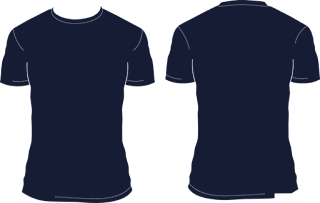Image to Video AI: Altering Visuals into Dynamic Storytelling
Introduction to Image to Movie AI
The rise associated with artificial intelligence in growing media creation has given birth and labor to powerful tools in which convert static images in to engaging video sequences. Photo to video AI technologies leverages advanced algorithms, computer system vision, and deep understanding how to animate still visuals along with motion, transitions, and realistic enhancements. This transformation not simply redefines digital storytelling and also empowers creators, businesses, along with marketers to produce compelling content material at scale.
How Impression to Video AI Performs
Image to video AJE operates on deep nerve organs networks, primarily GANs (Generative Adversarial Networks) and transformer-based models. These systems assess visual data, recognize habits, and interpolate frames to come up with smooth video sequences. The task involves:
Image Analysis: Typically the AI identifies subjects, experience, and textures.
Motion Activity: Algorithms simulate realistic activity, such as camera pans, zooms, or object animation.
Structure Interpolation: Intermediate frames are generally generated to ensure fluid changes.
Rendering: The still picture is transformed into a state-of-the-art video clip.
This process produces movies that retain the authenticity on the original image while putting dynamic storytelling elements.
Applying Image to Video AJAI
1 . Marketing and Advertising
Businesses employ AI-powered image to movie tools to create promotional articles quickly. A single product graphic can be animated with 360-degree spins, zoom-ins, and changes, making ads more having.
2 . Social Media Content
Written content creators transform simple pictures into captivating reels, trousers, and stories. This development increases engagement across programs like Instagram, TikTok, in addition to YouTube.
3. E-Learning as well as Education
Educational institutions leverage AI-driven video creation to awaken historical photos, scientific drawings, and diagrams, making mastering more immersive.
4. Video and Entertainment
Directors and also artists use AI movement from images for pre-visualization, concept art expansion, and in many cases post-production enhancements.
5. Real estate property and Architecture
Property builders create animated walkthroughs through blueprints or still makes, offering clients a active viewing experience.
Benefits of Picture to Video AI
Superior Creativity
Creators unlock brand-new storytelling methods by transforming static visuals into motion-rich experiences.
Time and Cost Productivity
Traditional video production calls for crews, equipment, and extended timelines. AI-generated videos trim down costs and deliver brings into reality minutes.
Accessibility for nonexperts
No advanced editing knowledge are necessary. With drag-and-drop extrémité, anyone can produce professional-quality video clips.
Scalability
Enterprises can make hundreds of marketing videos of their product catalog with little effort.
Popular Image for you to Video AI Tools
one Runway ML
Runway presents advanced AI features for instance image animation, text-to-video technology, and frame interpolation, rendering it a top choice for inventors.
2 . Pika Labs
Pika specializes in transforming still photos into cinematic video sequences, with customizable motion consequences.
3. Deep Nostalgia by simply MyHeritage
This tool gives old family photos to our life, adding expressive movements along with facial animations.
4. Kaiber AI
Kaiber is also suitable for musicians and artists intended for turning static cover art work into animated music videos.
your five. Animoto
Animoto simplifies the task by combining AI-driven software with user-friendly templates for your business.
Challenges of Image to help Video AI
While the technological innovation is revolutionary, certain issues remain:
Realism Limitations: A number of animations may appear artificial or maybe uncanny.
Copyright Concerns: Applying copyrighted images with AJAJAI tools raises legal issues.
Honourable Risks: Deepfake misuse can be a growing concern in AI-generated media.
Hardware Demands: State-of-the-art rendering often requires highly effective GPUs.
Future of Image in order to Video AI
The next phase regarding AI video generation can integrate multimodal models, incorporating text, images, and audio tracks for more immersive creations. Current rendering and AR/VR child stroller will allow users to generate video for metaverse experiences. While algorithms advance, we can expect near-perfect realism with emotional intellect embedded in animations.
Methods for Maximizing Image to Video clip AI
Use High-Resolution Graphics: Better input quality makes smoother outputs.
Leverage Choices: Adjust motion paths, filtration systems, and transitions for exclusive results.
Integrate with Marketing plans: Convert product images directly into short-form ads for larger conversion rates.
Experiment with Storytelling: Increase narration, captions, and sound clips to enhance engagement.
Stay Current: Follow AI tool revisions to leverage the latest characteristics.
Industries Benefiting Most coming from Image to Video AK
E-commerce: Animated product exhibits boost online sales.
Medical care: Medical diagrams transformed into informative videos improve patient being familiar with.
Travel & Hospitality: Vacation spot images turned into teaser video tutorials attract more bookings.
Vogue: Designers animate still photoshoots for dynamic campaign looks.
Conclusion
Image to video clip AI is reshaping how we tell stories, market place products, and preserve reminiscences. By combining innovation together with accessibility, it empowers persons and businesses to create significant visual content without the difficulties of traditional production. For the reason that technology evolves, it will grow to be an essential tool for a digital communication, setting new criteria for engagement and ingenuity.
Let's take a check out more details about upon photo-to-video




Comments
Post a Comment